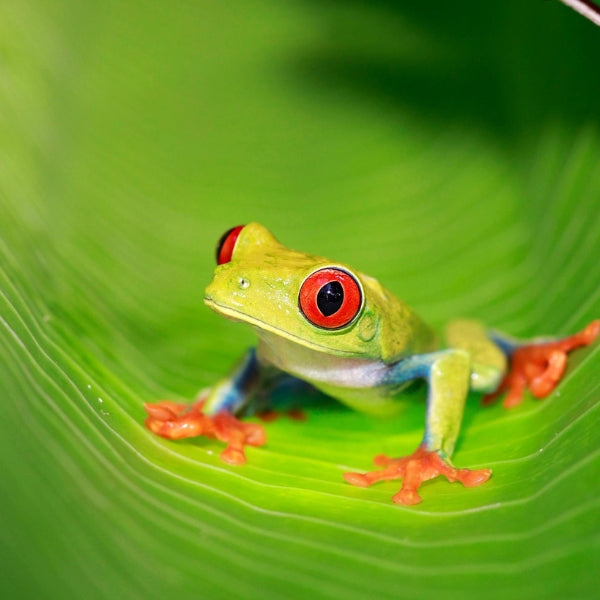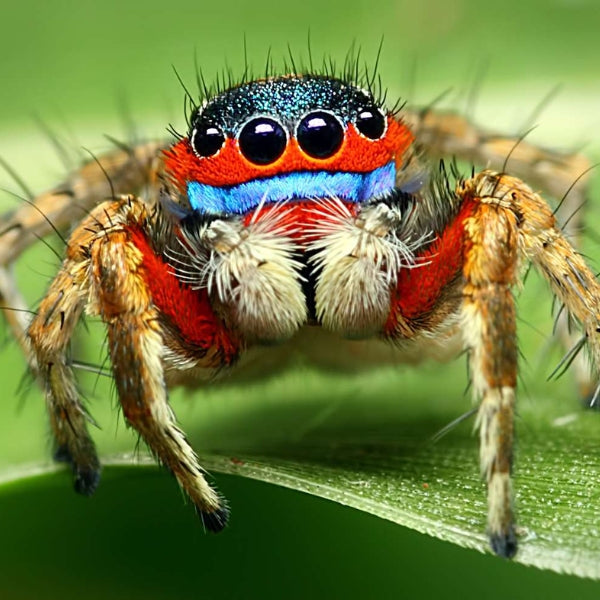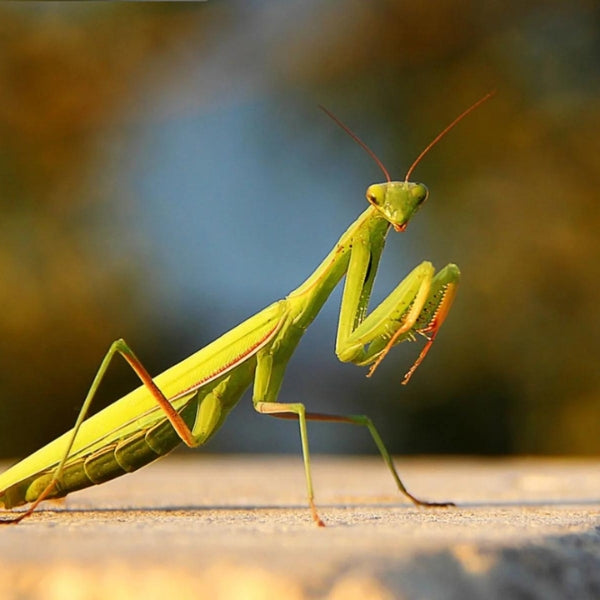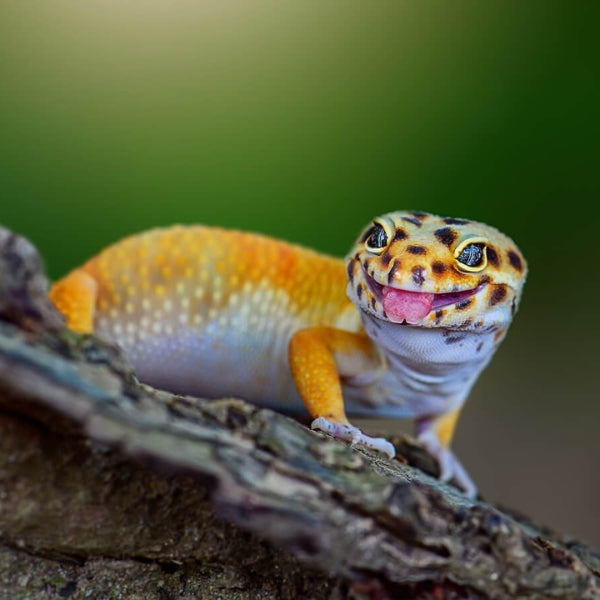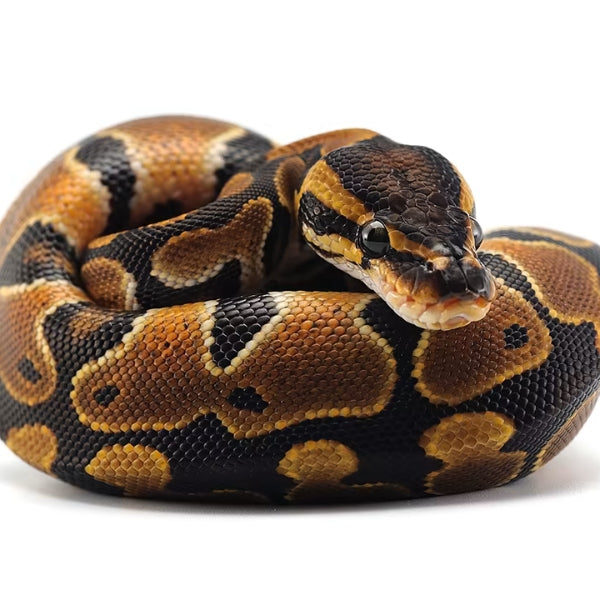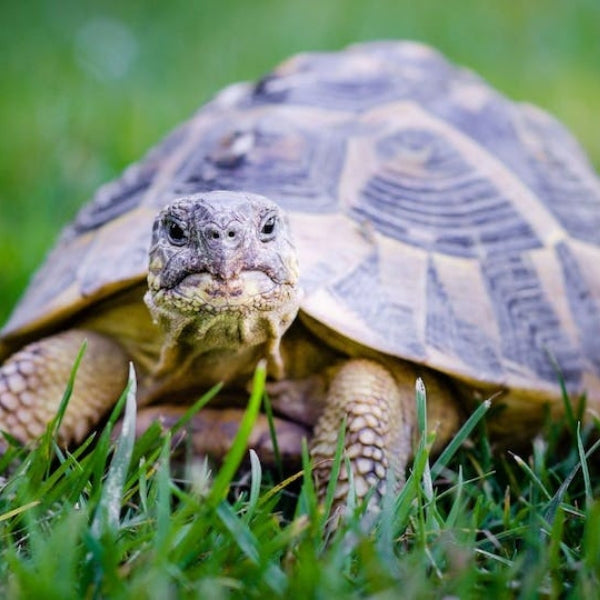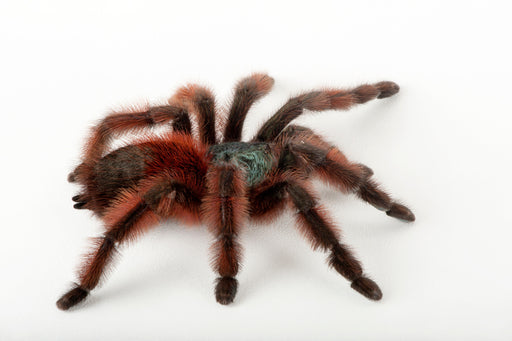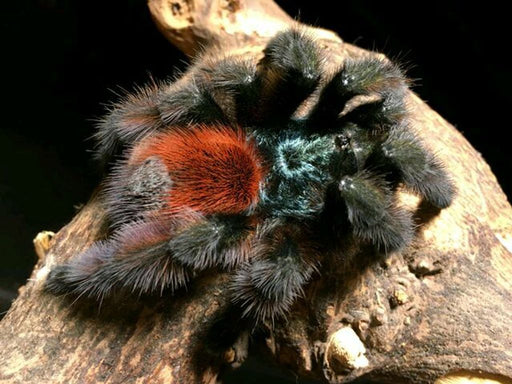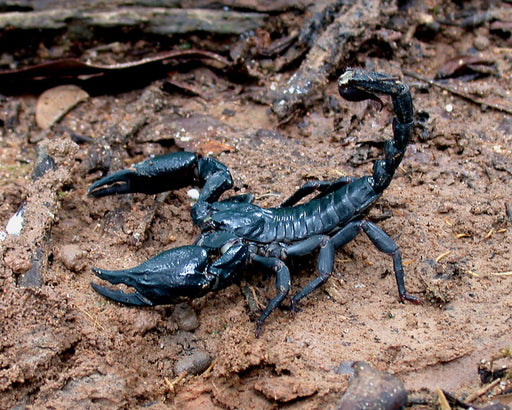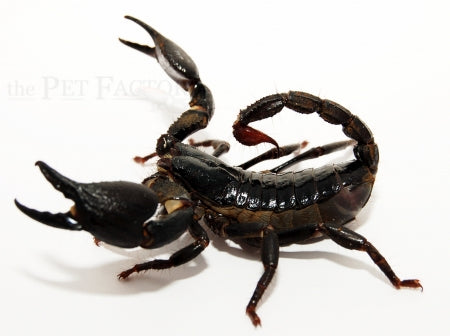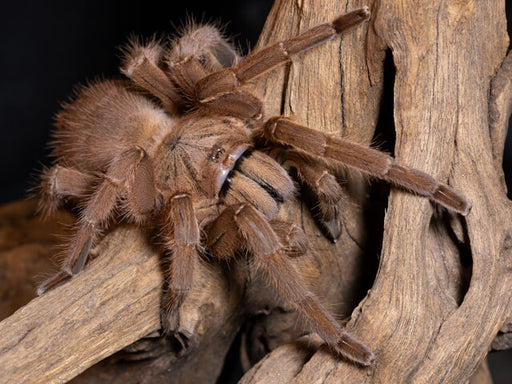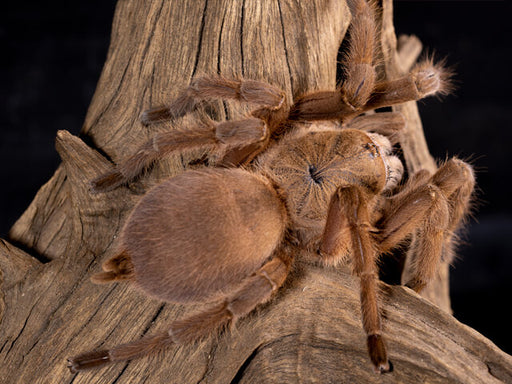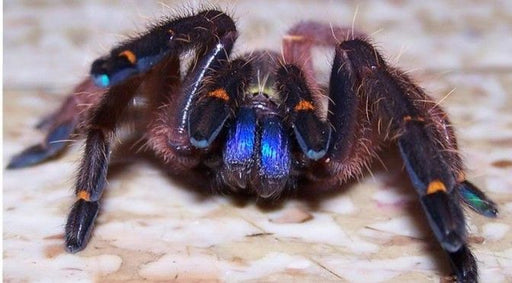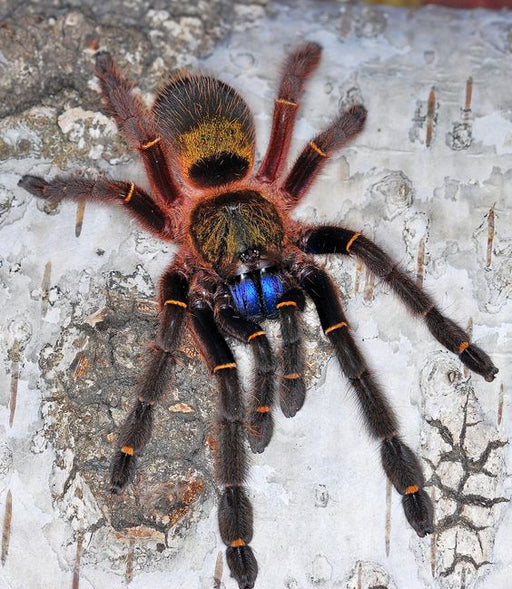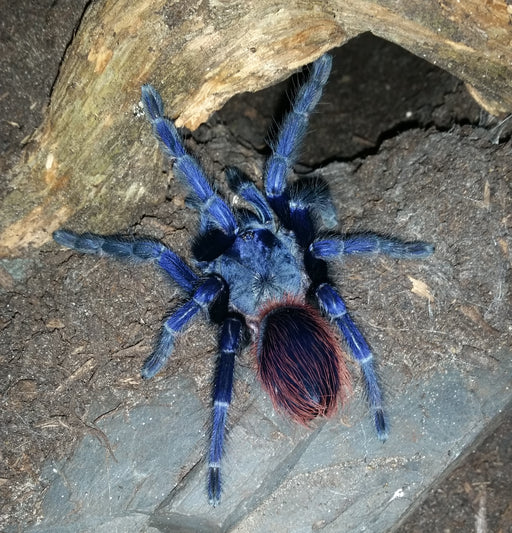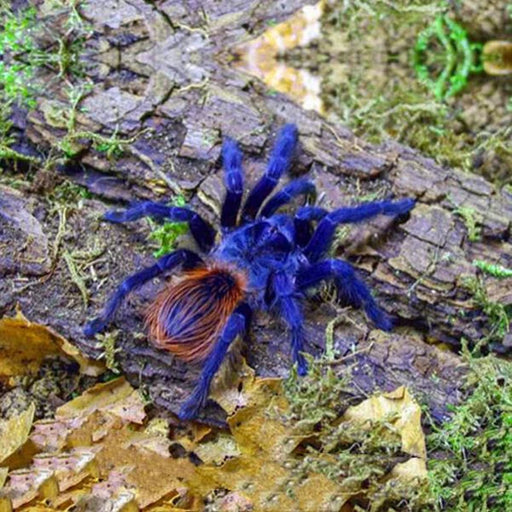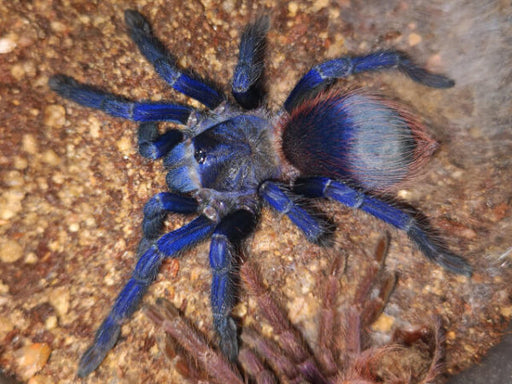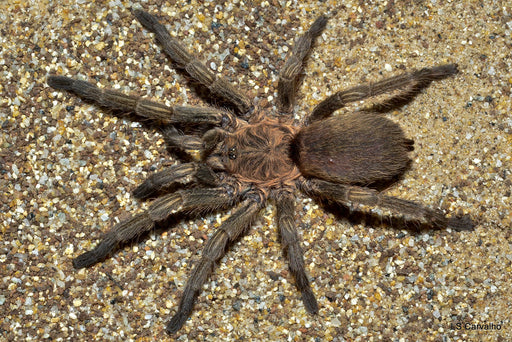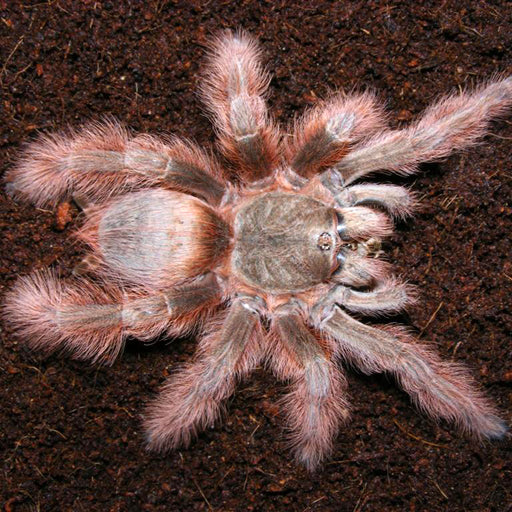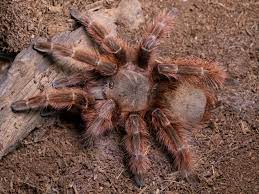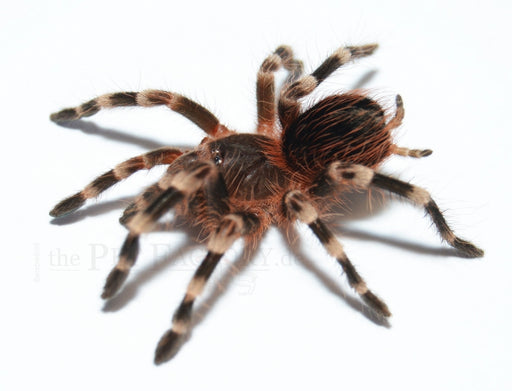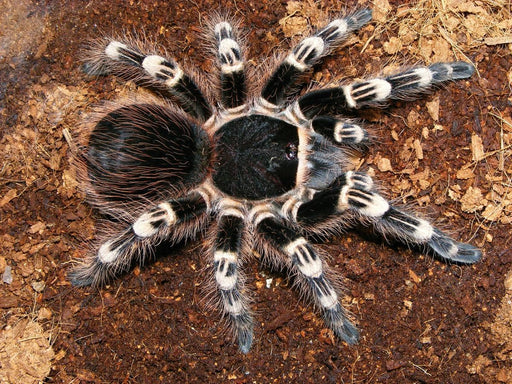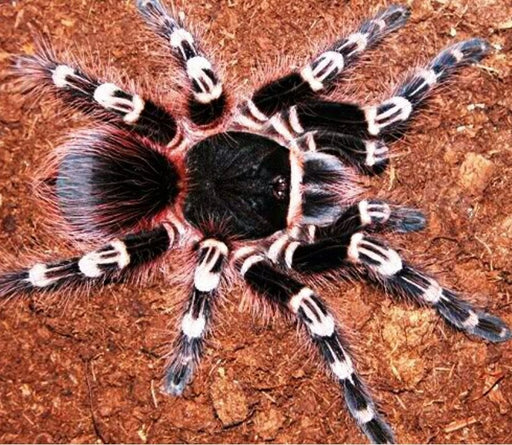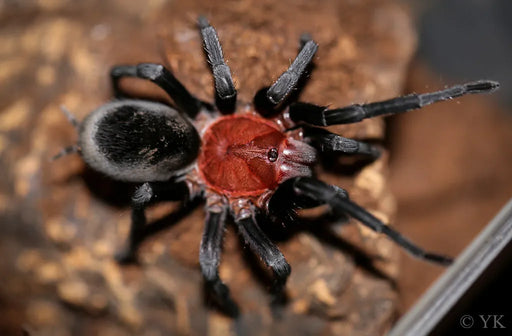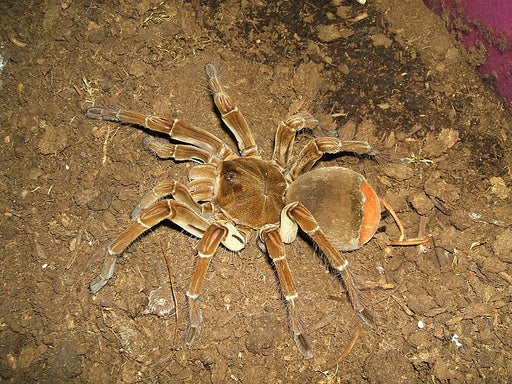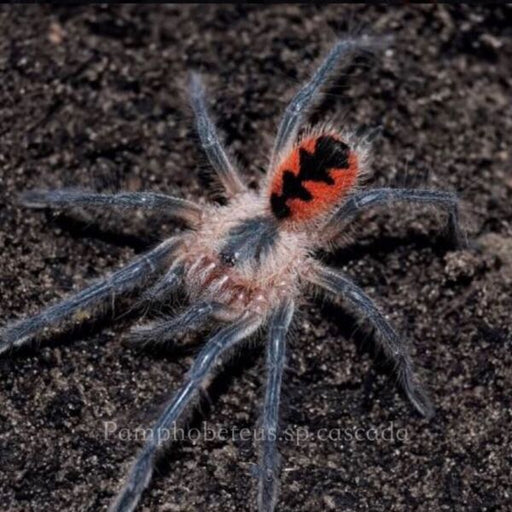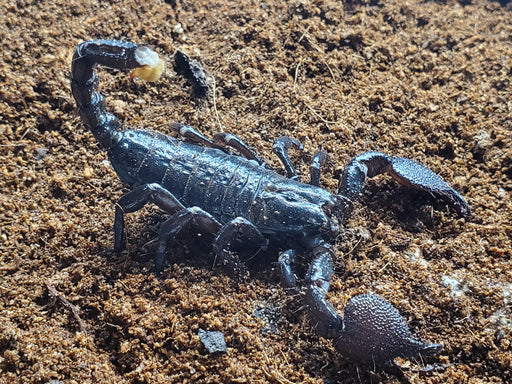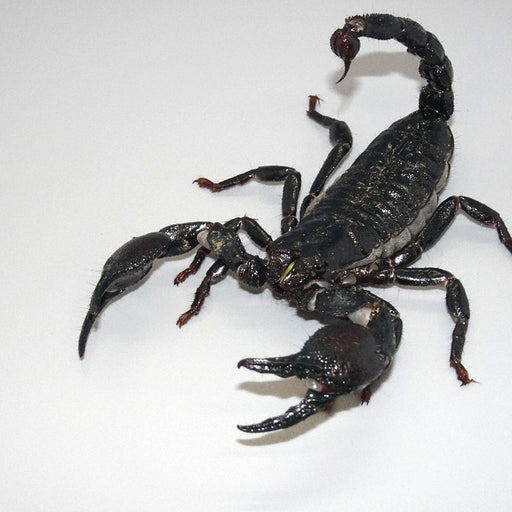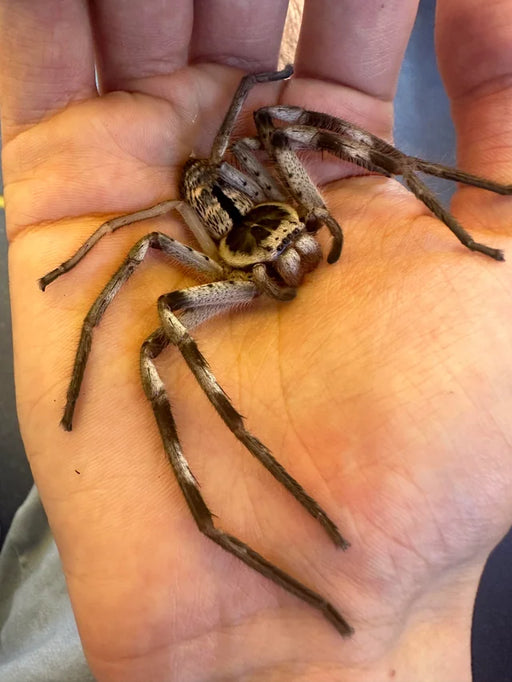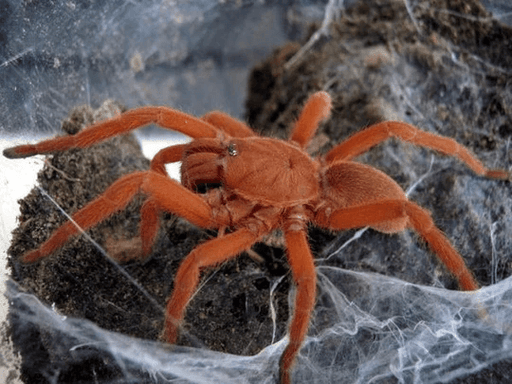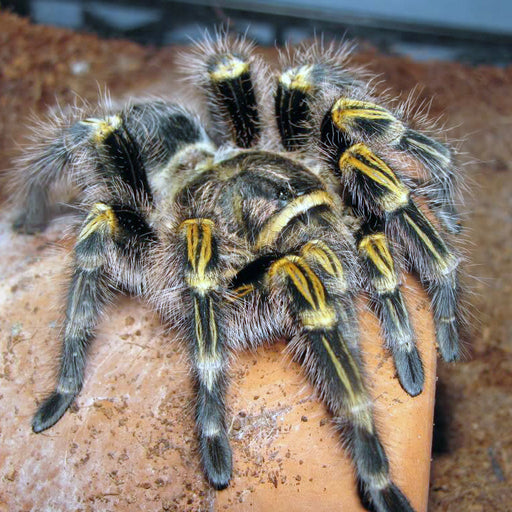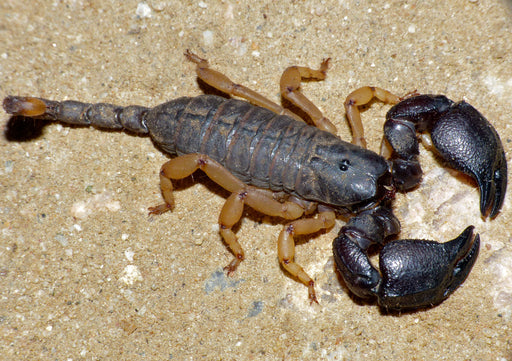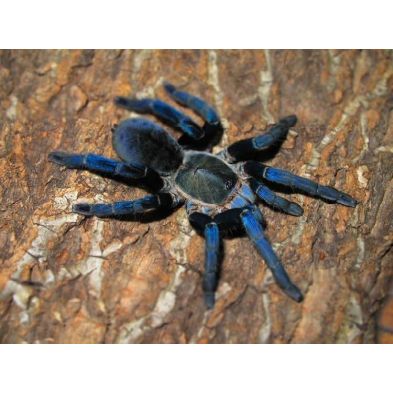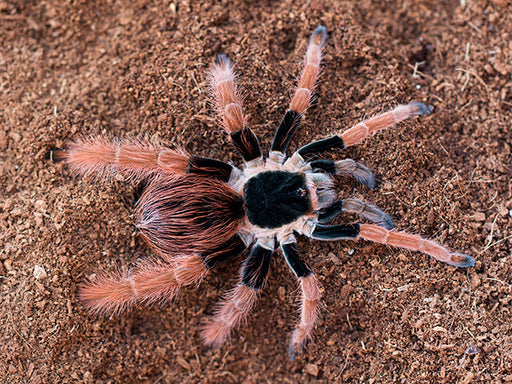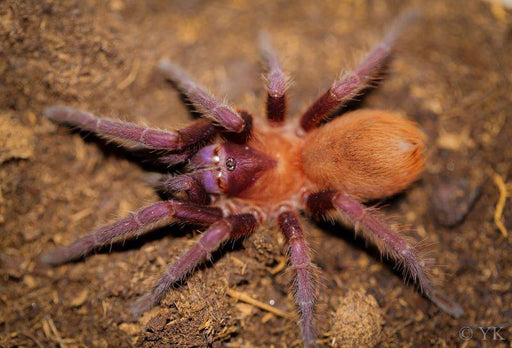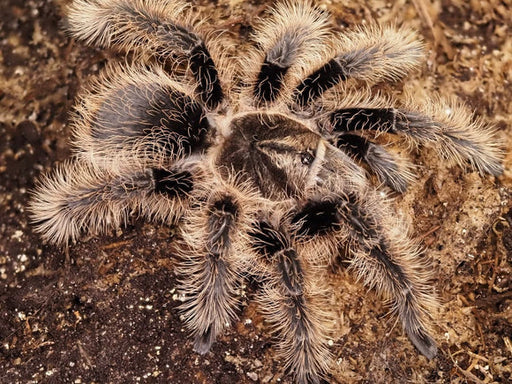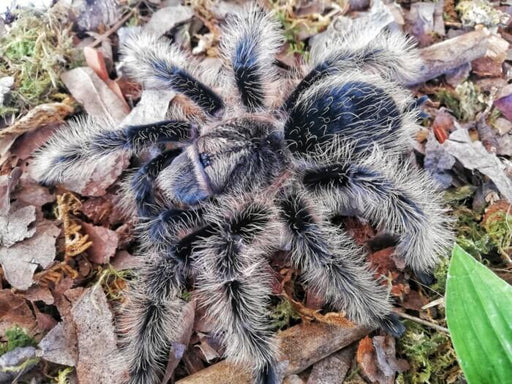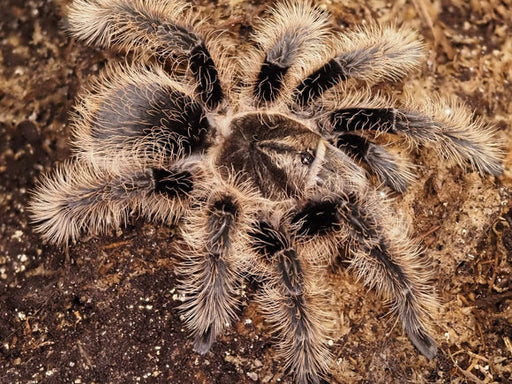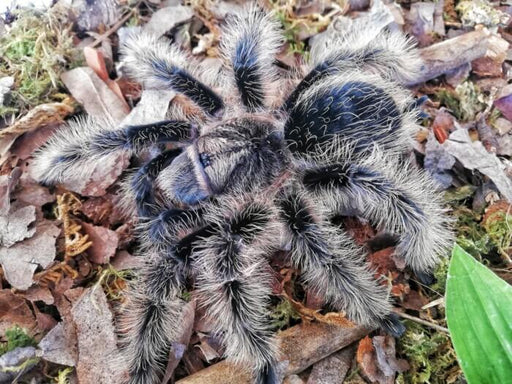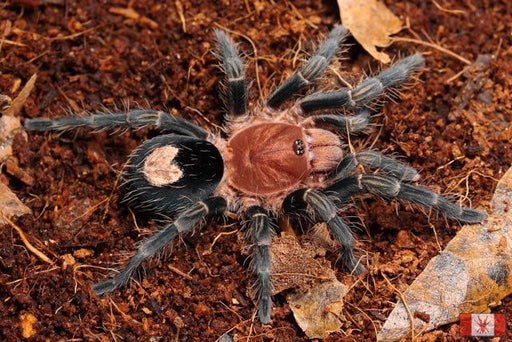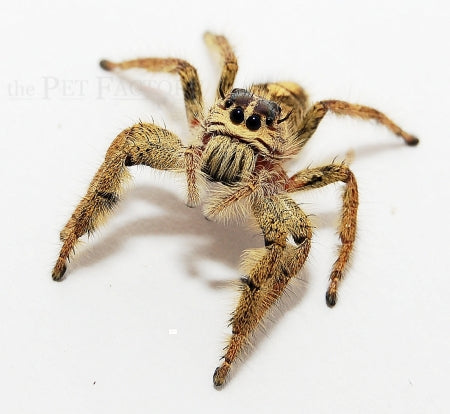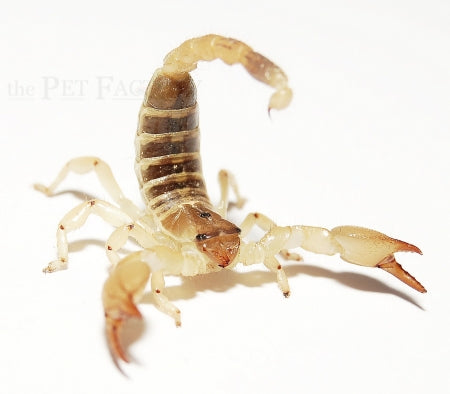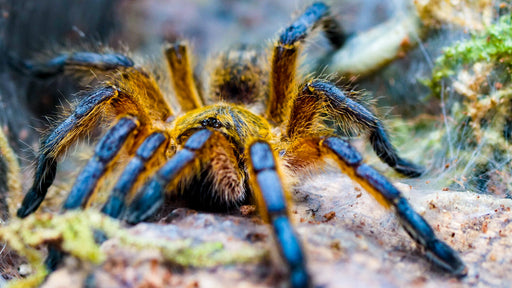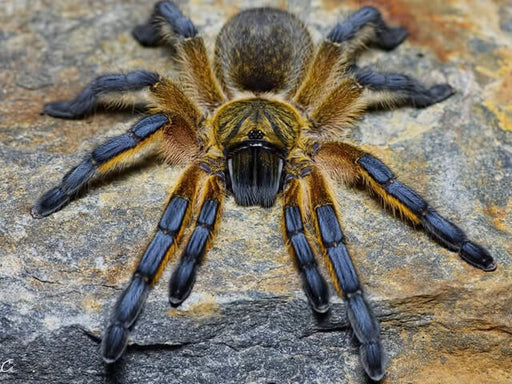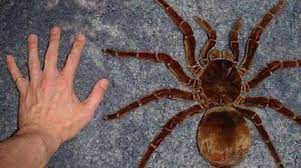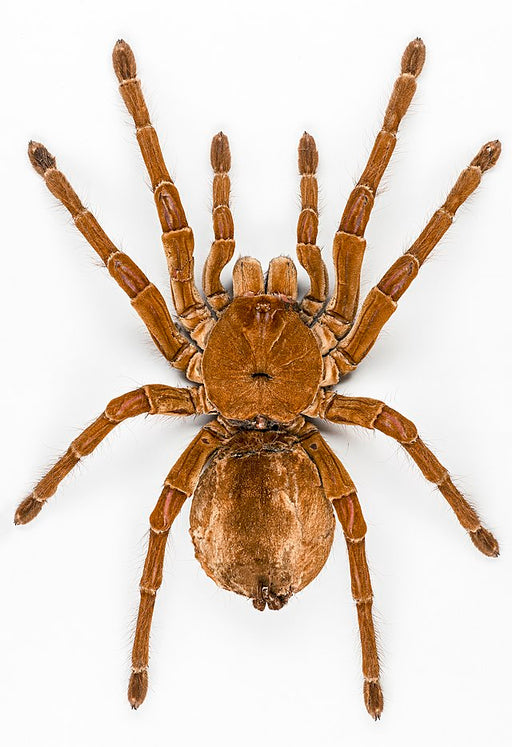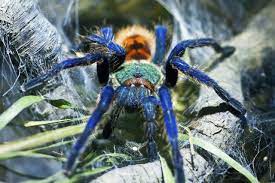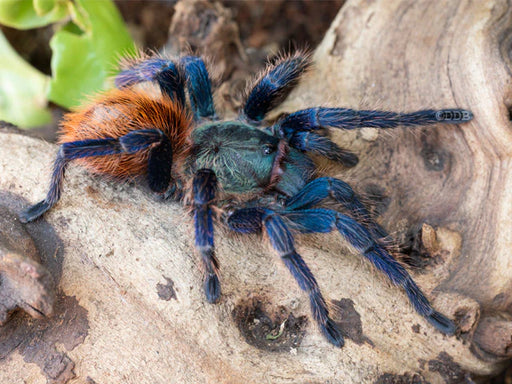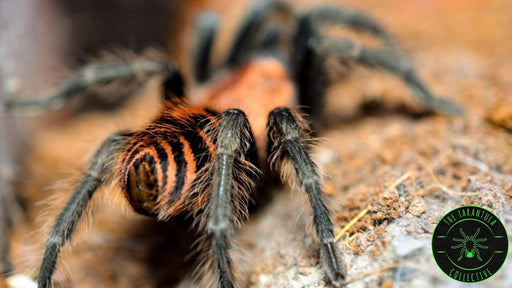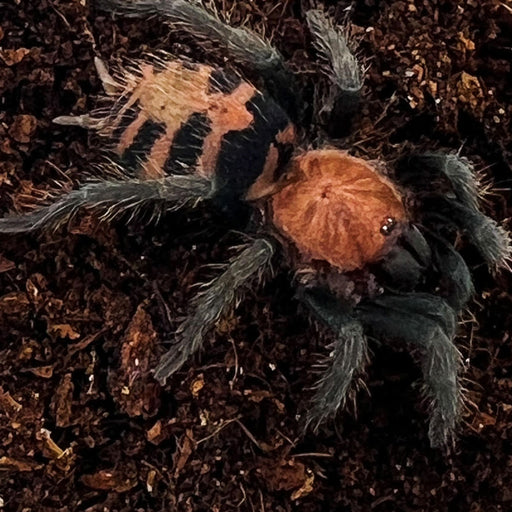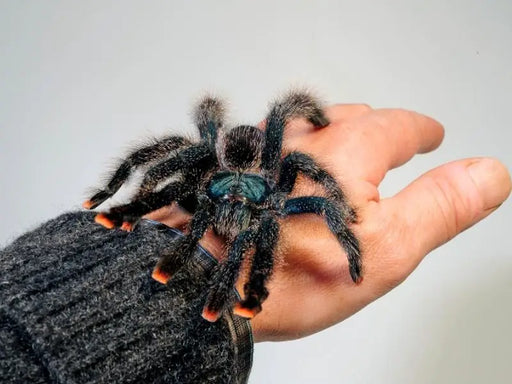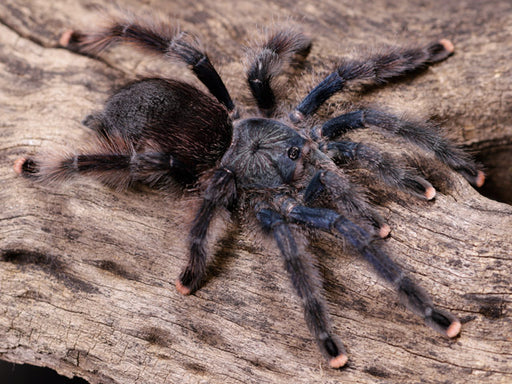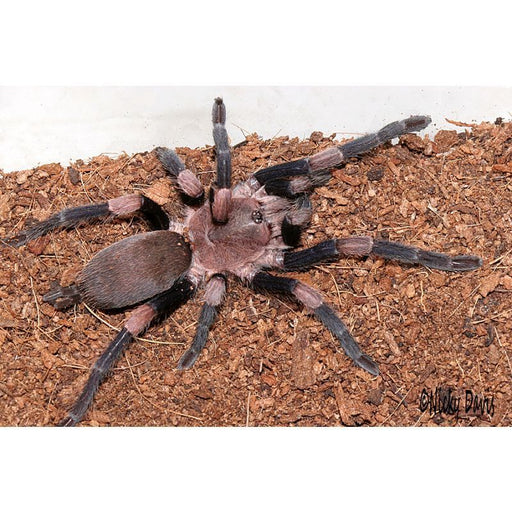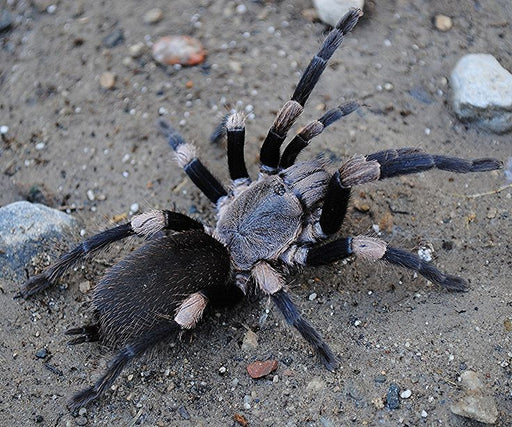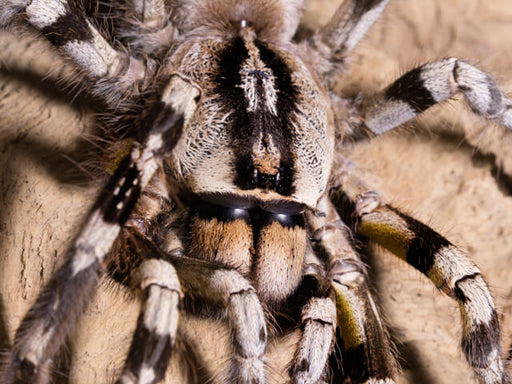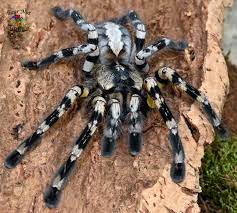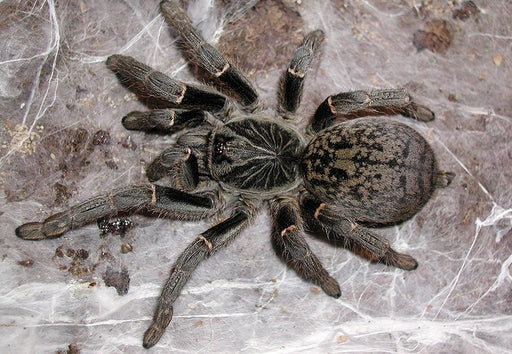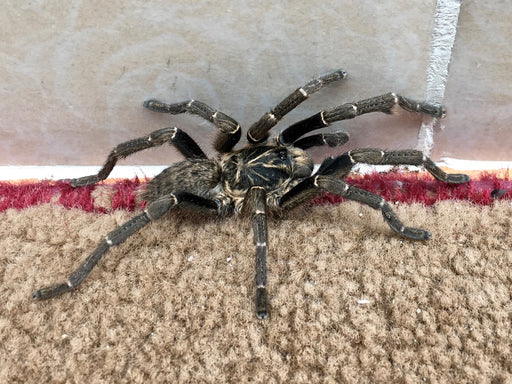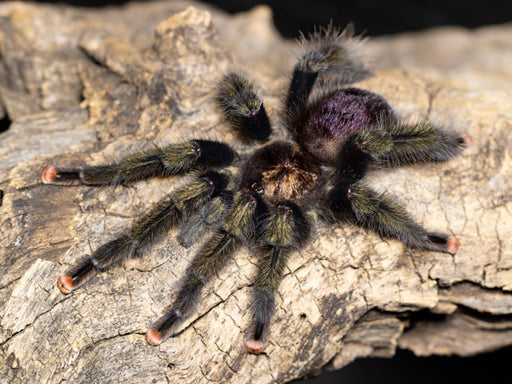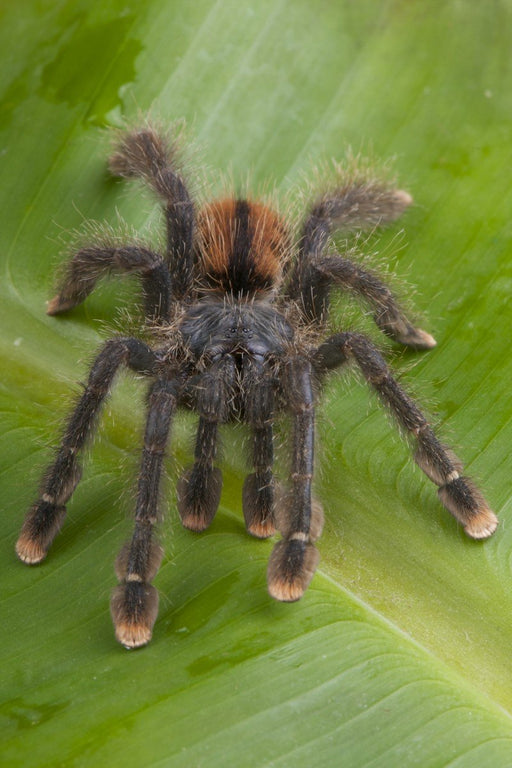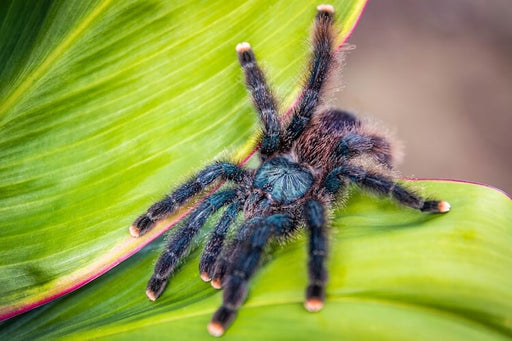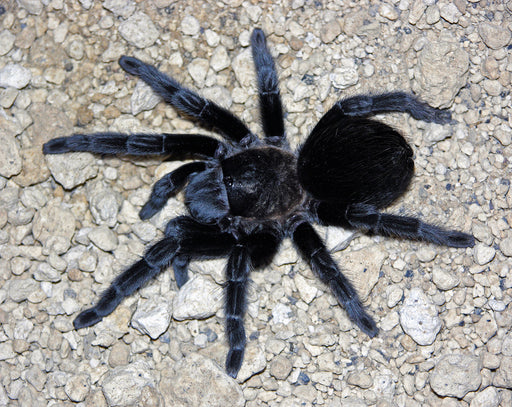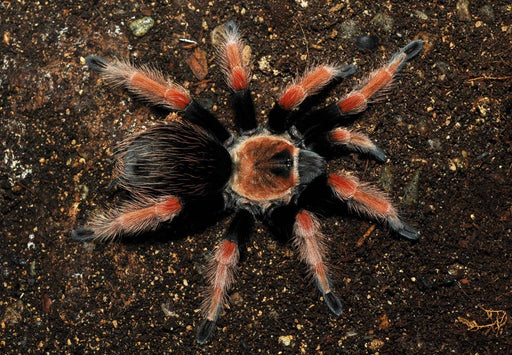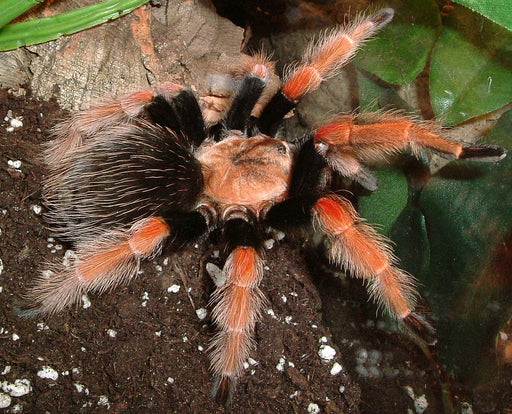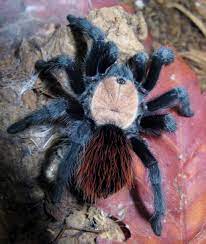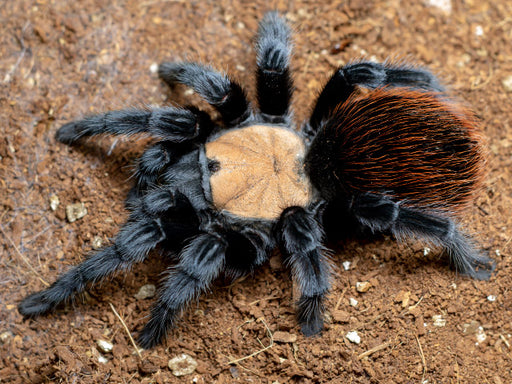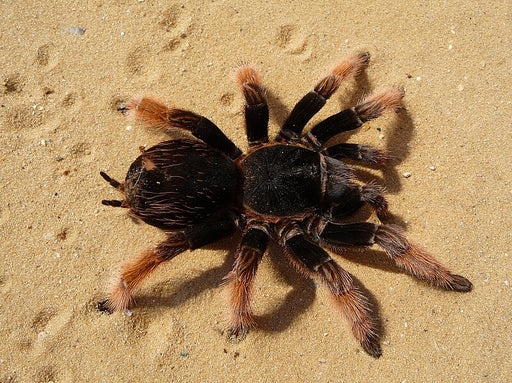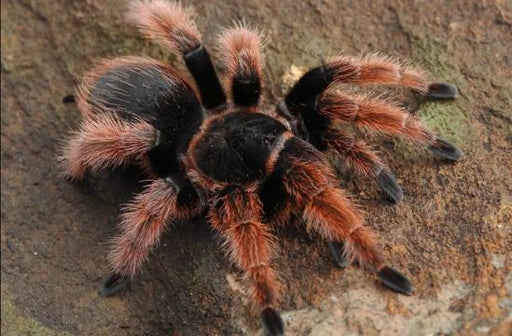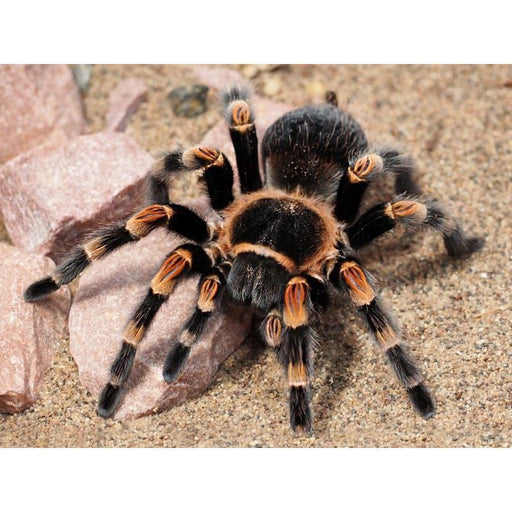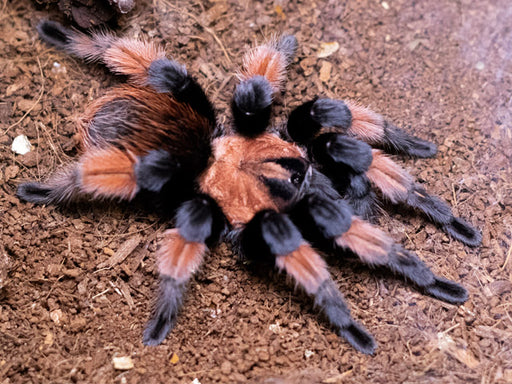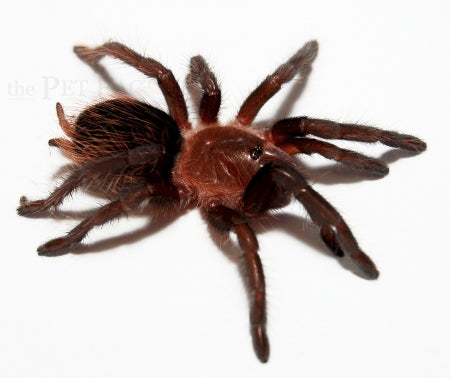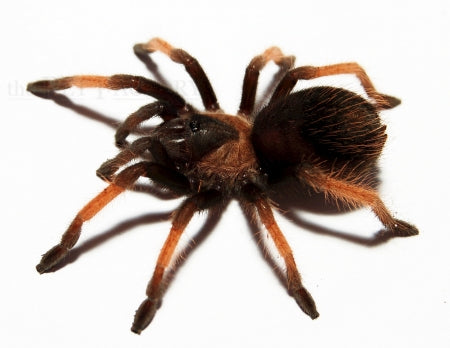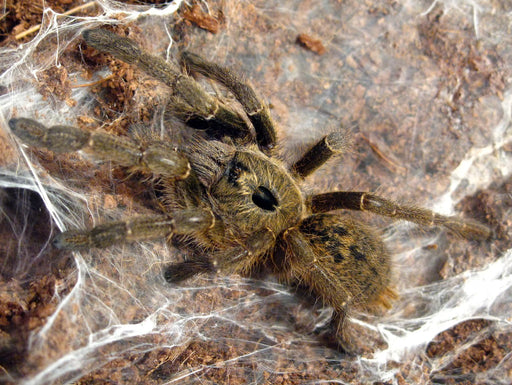Arachnids
Buy Spiders Online or In Store at Newlands Reptile Centre
We are your one stop shop for all your reptile needs. Looking to purchase a spider? We have everything you need. We have a wide variety of tarantulas, jumping spiders, scorpions, We also stock a wide selection of insects, mantids, snakes, lizards, tortoises and much more.-
Original price €44.99Original price €44.99 - Original price €44.99Original price €44.99Current price €36.99€36.99 - €36.99Current price €36.99| /
Antilles Pinktoe Tarantula | Caribena Versicolor
Only 3 left!The Caribena Versicolor, commonly known as the Antilles Pinktoe Tarantula, is a stunning and sought-after species of arboreal tarantula. It is n...
View full detailsOriginal price €44.99Original price €44.99 - Original price €44.99Original price €44.99Current price €36.99€36.99 - €36.99Current price €36.99| /Save 18% Save % -
Original price €0.00 - Original price €0.00Original price €0.00€43.99€43.99 - €43.99Current price €43.99| /
Asian Blue Forest Scorpion | Heterometrus cyaneus
Out of stockThe Asian Blue Forest Scorpion, scientifically known as Heterometrus cyaneus, is a striking arachnid species prized by enthusiasts for its unique a...
View full detailsOriginal price €0.00 - Original price €0.00Original price €0.00€43.99€43.99 - €43.99Current price €43.99| /Sold out -
Original price €44.99 - Original price €44.99Original price€44.99€44.99 - €44.99Current price €44.99| /
Asian Fawn Tarantula | Chilobrachys huahini
Only 1 left!Common Names: Asian Fawn | Thai Red | Hauhini Bird Spider | Hauhini Bird Eater Adult Size: 14 to 15cm Type: Old World, Fossorial. Growth Rate: Fast...
View full detailsOriginal price €44.99 - Original price €44.99Original price€44.99€44.99 - €44.99Current price €44.99| / -
Original price €0.00 - Original price €0.00Original price €0.00€132.99€132.99 - €132.99Current price €132.99| /
Blue Fang Tarantula | Ephebopus cyanognathus
Only 1 left!The Blue Fang Tarantula, scientifically known as Ephebopus cyanognathus, is a striking and relatively rare species in the pet trade. It is known fo...
View full detailsOriginal price €0.00 - Original price €0.00Original price €0.00€132.99€132.99 - €132.99Current price €132.99| / -
Original price €63.99 - Original price €63.99Original price€63.99€63.99 - €63.99Current price €63.99| /
Brazilian Blue Tarantula (Lasiocyano (ex. Pterinopelma) sazimai Small
Out of stockThe Brazilian Blue Tarantula, also known as the Lasiocyano (ex. Pterinopelma) sazimai, is a strikingly beautiful spider species that is highl...
View full detailsOriginal price €63.99 - Original price €63.99Original price€63.99€63.99 - €63.99Current price €63.99| /Sold out -
Original price €0.00 - Original price €0.00Original price €0.00€21.99€21.99 - €21.99Current price €21.99| /
Brazilian Blue Tarantula | Pterinopelma sazimai
Only 1 left!The Brazilian Blue Tarantula, scientifically known as Pterinopelma sazimai, is a striking and coveted tarantula species originating from the tropic...
View full detailsOriginal price €0.00 - Original price €0.00Original price €0.00€21.99€21.99 - €21.99Current price €21.99| / -
Original price €107.99 - Original price €107.99Original price€107.99€107.99 - €107.99Current price €107.99| /
Brazilian Bronze Tarantula
Only 1 left!The Brazilian Bronze Tarantula, scientifically known as Dolichothele exilis, is a medium sized and relatively docile species of tarantula. Th...
View full detailsOriginal price €107.99 - Original price €107.99Original price€107.99€107.99 - €107.99Current price €107.99| / -
Original price €84.99 - Original price €84.99Original price€84.99€84.99 - €84.99Current price €84.99| /
Brazilian Giant Blonde | Nhandu tripepii
Out of stockThe Brazilian Giant Blonde Tarantula, also known as Nhandu tripepii, is a beautiful and unique species of tarantula. This tarantula species is one ...
View full detailsOriginal price €84.99 - Original price €84.99Original price€84.99€84.99 - €84.99Current price €84.99| /Sold out -
Original price €0.00 - Original price €0.00Original price €0.00€57.99€57.99 - €57.99Current price €57.99| /
Brazilian White Knee Tarantula (Medium) | Acanthoscurria geniculata m
Only 2 left!The Brazilian White Knee tarantula, scientifically known as Acanthoscurria geniculata, is a popular pet tarantula among enthusiasts. These tarantul...
View full detailsOriginal price €0.00 - Original price €0.00Original price €0.00€57.99€57.99 - €57.99Current price €57.99| / -
Original price €0.00 - Original price €0.00Original price €0.00€29.99€29.99 - €29.99Current price €29.99| /
Brazilian White Knee Tarantula | Acanthoscuria geniculata
Out of stockThe Brazilian White Knee Tarantula, Acanthoscuria geniculata, is a popular species among tarantula enthusiasts, renowned for its striking appearanc...
View full detailsOriginal price €0.00 - Original price €0.00Original price €0.00€29.99€29.99 - €29.99Current price €29.99| /Sold out -
Original price €96.99 - Original price €96.99Original price€96.99€96.99 - €96.99Current price €96.99| /
Brazillian Redhead Tarantula | Bumba (Maraca) Cabocla
Only 1 left!The Brazilian Redhead Tarantula, also known as the Bumba cabocla, is a beautiful and hardy species of tarantula that is popular among pet enthusias...
View full detailsOriginal price €96.99 - Original price €96.99Original price€96.99€96.99 - €96.99Current price €96.99| / -
Original price €0.00 - Original price €0.00Original price €0.00€154.99€154.99 - €154.99Current price €154.99| /
Burgundy Goliath Bird Eater (Theraphosa stirmi)
Only 1 left!The Burgundy Goliath Bird Eater, also known as the Goliath Tarantula, is a large and impressive spider that can reach sizes of up to 30 centimeters...
View full detailsOriginal price €0.00 - Original price €0.00Original price €0.00€154.99€154.99 - €154.99Current price €154.99| / -
Original price €92.99 - Original price €92.99Original price€92.99€92.99 - €92.99Current price €92.99| /
Casada Birdeater (Pamphobeteus sp. Cascada) - Juvenile
Only 2 left!The Casada Birdeater, also known as Pamphobeteus casada, is a remarkable species of tarantula that captivates enthusiasts with its impressive size...
View full detailsOriginal price €92.99 - Original price €92.99Original price€92.99€92.99 - €92.99Current price €92.99| / -
Original price €0.00 - Original price €0.00Original price €0.00€99.99€99.99 - €99.99Current price €99.99| /
Cave Claw Scorpion | Pandipalpus viatoris
Only 1 left!The Cave Claw Scorpion, known scientifically as Pandipalpus viatoris, is a fascinating arachnid species. This species is recognized for its robust ...
View full detailsOriginal price €0.00 - Original price €0.00Original price €0.00€99.99€99.99 - €99.99Current price €99.99| / -
Original price €0.00 - Original price €0.00Original price €0.00€21.99€21.99 - €21.99Current price €21.99| /
CB Huntsman Spider
Out of stockThe Huntsman Spider, scientifically known as the Sparassidae, is a remarkable arachnid with a distinctive appearance and unique characteristics. Th...
View full detailsOriginal price €0.00 - Original price €0.00Original price €0.00€21.99€21.99 - €21.99Current price €21.99| /Sold out -
Original price €0.00 - Original price €0.00Original price €0.00€79.99€79.99 - €79.99Current price €79.99| /
CB Philippine Tangerine Tarantula
Only 1 left!The Philippine Tangerine Tarantula, scientifically known as Orphnaecus philippinus, is a captivating and striking arachnid species sought after by ...
View full detailsOriginal price €0.00 - Original price €0.00Original price €0.00€79.99€79.99 - €79.99Current price €79.99| / -
Original price €48.99 - Original price €48.99Original price€48.99€48.99 - €48.99Current price €48.99| /
Chaco Golden Knee | Grammostola Pulchripes
Only 3 left!*Specimens are Spiderlings* The animals are dark in color with strong, golden yellow double stripes on the patella. In the habitat of Grammost...
View full detailsOriginal price €48.99 - Original price €48.99Original price€48.99€48.99 - €48.99Current price €48.99| / -
Original price €0.00 - Original price €0.00Original price €0.00€97.99€97.99 - €97.99Current price €97.99| /
Cheloctonus Jonesii - Jones' Tree Creeper
Only 1 left!Cheloctonus Jonesii, commonly known as the Jonesii scorpion, is a fascinating arachnid species that captivates enthusiasts and researcher...
View full detailsOriginal price €0.00 - Original price €0.00Original price €0.00€97.99€97.99 - €97.99Current price €97.99| / -
Original price €104.99 - Original price €104.99Original price€104.99€104.99 - €104.99Current price €104.99| /
Cobalt Blue Tarantula (Cyriopagopus lividus)
Out of stockCobalt blue tarantulas (Cyriopagopus lividus) live in the tropical forests of Thailand, Laos, Cambodia and Vietnam. It is one of the most attractiv...
View full detailsOriginal price €104.99 - Original price €104.99Original price€104.99€104.99 - €104.99Current price €104.99| /Sold out -
Original price €59.99 - Original price €59.99Original price€59.99€59.99 - €59.99Current price €59.99| /
Colombian Giant Redleg Tarantula | Megaphobema Robustum
Out of stockThe Colombian Giant Redleg Tarantula, scientifically known as Megaphobema robustum, is a captivating and impressive species of tarantula. It is nat...
View full detailsOriginal price €59.99 - Original price €59.99Original price€59.99€59.99 - €59.99Current price €59.99| /Sold out -
Original price €125.00 - Original price €125.00Original price€125.00€125.00 - €125.00Current price €125.00| /
Cuban Violet Tarantula | Citharacanthus Cyaneus
Only 1 left!Citharacanthus cyaneus was first described in 1994 and is a dwarf species endemic to Cuba. Both male and female C. cyaneus are brilliantly and uniq...
View full detailsOriginal price €125.00 - Original price €125.00Original price€125.00€125.00 - €125.00Current price €125.00| / -
Original price €0.00 - Original price €0.00Original price €0.00€39.99€39.99 - €39.99Current price €39.99| /
Curly Hair Tarantula | Tliltocatl albopilosum (Ml)
Only 3 left!The curly-haired tarantula is a Central American tarantula. Its distribution area is the states of Costa Rica, Venezuela, Guatemala, Nicaragua and ...
View full detailsOriginal price €0.00 - Original price €0.00Original price €0.00€39.99€39.99 - €39.99Current price €39.99| / -
Original price €0.00 - Original price €0.00Original price €0.00€23.99€23.99 - €23.99Current price €23.99| /
Curly Hair Tarantula | Tliltocatl albopilosum (Sm)
Out of stockThe curly-haired tarantula is a Central American tarantula. Its distribution area is the states of Costa Rica, Venezuela, Guatemala, Nicaragua and ...
View full detailsOriginal price €0.00 - Original price €0.00Original price €0.00€23.99€23.99 - €23.99Current price €23.99| /Sold out -
Original price €34.99 - Original price €34.99Original price€34.99€34.99 - €34.99Current price €34.99| /
Cyriocosmus sellatus Tarantula
Only 1 left!Cyriocosmus sellatus s - Spiderling
Original price €34.99 - Original price €34.99Original price€34.99€34.99 - €34.99Current price €34.99| / -
Original price €0.00 - Original price €0.00Original price €0.00€109.99€109.99 - €109.99Current price €109.99| /
Dwarf Pink Leg Tarantula
Only 1 left!OverviewLatin Name: Kochiana brunnipesEase of Care: BeginnerBehaviour: NocturnalBreeding: Captive BredDiet: InsectivoreEnvironment: TropicalCountry...
View full detailsOriginal price €0.00 - Original price €0.00Original price €0.00€109.99€109.99 - €109.99Current price €109.99| / -
Original price €0.00 - Original price €0.00Original price €0.00€39.99€39.99 - €39.99Current price €39.99| /
Eyelash Jumpipng Spider | Hyllus diardi
Out of stockEyelash Jumping Spider (Hyllus diardi) is a fascinating arachnid known for its striking appearance and incredible jumping abilities. These spiders ...
View full detailsOriginal price €0.00 - Original price €0.00Original price €0.00€39.99€39.99 - €39.99Current price €39.99| /Sold out -
Original price €0.00 - Original price €0.00Original price €0.00€29.99€29.99 - €29.99Current price €29.99| /
Gold Claw Scorpion
Only 1 left!Scorpio maurusLinnaeus, 1758Group animal husbandry is possible, but newly formed groups should be carefully observed at the beginning. For a group ...
View full detailsOriginal price €0.00 - Original price €0.00Original price €0.00€29.99€29.99 - €29.99Current price €29.99| / -
Original price €0.00 - Original price €0.00Original price €0.00€85.99€85.99 - €85.99Current price €85.99| /
Golden Blue Leg Baboon Tarantula | Harpactira pulchripes
Only 1 left!The Golden Blue Leg Baboon Tarantula, Harpactira pulchripes, is a captivating and highly sought-after species in the tarantula hobby. This species ...
View full detailsOriginal price €0.00 - Original price €0.00Original price €0.00€85.99€85.99 - €85.99Current price €85.99| / -
Original price €0.00 - Original price €0.00Original price €0.00€159.99€159.99 - €159.99Current price €159.99| /
Goliath Birdeater Tarantula | Theraphosa blondi
Only 1 left!The Goliath Birdeater, scientifically known as Theraphosa blondi, is one of the largest and most fascinating arachnids in the world. Native to the ...
View full detailsOriginal price €0.00 - Original price €0.00Original price €0.00€159.99€159.99 - €159.99Current price €159.99| / -
Original price €0.00 - Original price €0.00Original price €0.00€65.99€65.99 - €65.99Current price €65.99| /
Green Bottle Blue Tarantula | Chromatopelma cyaneopubescens
Out of stockThe Green Bottle Blue Tarantula, Chromatopelma cyaneopubescens, is a visually stunning species renowned for its vibrant coloration and unique webbi...
View full detailsOriginal price €0.00 - Original price €0.00Original price €0.00€65.99€65.99 - €65.99Current price €65.99| /Sold out -
Original price €49.99 - Original price €49.99Original price€49.99€49.99 - €49.99Current price €49.99| /
Guatemalan Tiger Rump Tarantula (Davus pentaloris)
Only 1 left!Guatemalan Tiger Rump Tarantula (Davus pentaloris) Origin: Native to Guatemala, El Salvador, and Mexico. it inhabits lowland forests where it lives...
View full detailsOriginal price €49.99 - Original price €49.99Original price€49.99€49.99 - €49.99Current price €49.99| / -
Original price €0.00 - Original price €0.00Original price €0.00€74.99€74.99 - €74.99Current price €74.99| /
Guyana Pinktoe Tarantula | Avicularia avicularia
Only 1 left!The Guyana Pinktoe Tarantula, scientifically known as Avicularia avicularia, is a captivating and popular species among tarantula enthusiasts. This...
View full detailsOriginal price €0.00 - Original price €0.00Original price €0.00€74.99€74.99 - €74.99Current price €74.99| / -
Original price €31.99 - Original price €31.99Original price€31.99€31.99 - €31.99Current price €31.99| /
Himalayan Banded Earth Tiger Tarantula (Haplocosmia himalayana)
Only 1 left!The Haplocosmia himalayana (Himalayan Earth Tiger) is an Old World fossorial species from Northern India. This species has an elegant brown and bla...
View full detailsOriginal price €31.99 - Original price €31.99Original price€31.99€31.99 - €31.99Current price €31.99| / -
Original price €59.99 - Original price €59.99Original price€59.99€59.99 - €59.99Current price €59.99| /
Indian ornamental tarantula | Poecilotheria regalis (Juvenile)
Out of stockPoecilotheria regalis (juvenile)
Original price €59.99 - Original price €59.99Original price€59.99€59.99 - €59.99Current price €59.99| /Sold out -
Original price €0.00 - Original price €0.00Original price €0.00€18.99€18.99 - €18.99Current price €18.99| /
Kilimanjaro Mustard Baboon Tarantula | Pterinochilus chordatus
Out of stockThe Kilimanjaro Mustard Baboon Tarantula, scientifically known as Pterinochilus chordatus, is a fascinating and less common species in the tarantul...
View full detailsOriginal price €0.00 - Original price €0.00Original price €0.00€18.99€18.99 - €18.99Current price €18.99| /Sold out -
Original price €0.00 - Original price €0.00Original price €0.00€71.99€71.99 - €71.99Current price €71.99| /
Mardi Gras Pink Toe Tarantula | Avicularia sp. Pucallpa
Only 2 left!Please note specimens are spiderlings. The Mardi Gras Pink Toe Tarantula, scientifically referred to as Avicularia sp. Pucallpa, is...
View full detailsOriginal price €0.00 - Original price €0.00Original price €0.00€71.99€71.99 - €71.99Current price €71.99| / -
Original price €45.99 - Original price €45.99Original price€45.99€45.99 - €45.99Current price €45.99| /
Metallic Pink Toe Tarantula Spiderling | Avicularia Metallica
Out of stockAvicularia metallica is a tree-dwelling tarantula that can often be found in bromeliads. What is striking about this species of tarantula is the di...
View full detailsOriginal price €45.99 - Original price €45.99Original price€45.99€45.99 - €45.99Current price €45.99| /Sold out -
Original price €0.00 - Original price €0.00Original price €0.00€64.99€64.99 - €64.99Current price €64.99| /
Mexican Black Velvet "Tliltocatl" Tarantula | Brachypelma schroederi m
Only 1 left!The Mexican Black Velvet Tarantula, scientifically known as Brachypelma schroederi, is a striking and sought-after tarantula species in the world o...
View full detailsOriginal price €0.00 - Original price €0.00Original price €0.00€64.99€64.99 - €64.99Current price €64.99| / -
Original price €63.99 - Original price €63.99Original price €63.99€72.99€72.99 - €72.99Current price €72.99| /
Mexican Fireleg Tarantula | Brachypelma boehmei
Only 2 left!The Mexican Fireleg Tarantula is a terrestrial, opportunistic burrower. She can move very quickly, and the rusticating hair can be exceptionally ir...
View full detailsOriginal price €63.99 - Original price €63.99Original price €63.99€72.99€72.99 - €72.99Current price €72.99| / -
Original price €0.00 - Original price €0.00Original price €0.00€63.99€63.99 - €63.99Current price €63.99| /
Mexican Golden Red Rump Tarantula | Brachypelma albiceps (Med)
Only 1 left!The Mexican Golden Red Rump Tarantula, also known as Brachypelma vagans, is a popular species of tarantula kept as a pet by enthusias...
View full detailsOriginal price €0.00 - Original price €0.00Original price €0.00€63.99€63.99 - €63.99Current price €63.99| / -
Original price €34.99 - Original price €34.99Original price€34.99€34.99 - €34.99Current price €34.99| /
Mexican Golden Red Rump Tarantula | Brachypelma albiceps (Sml)
Only 1 left!The Mexican Golden Red Rump Tarantula, also known as Brachypelma vagans, is a popular species of tarantula kept as a pet by enthusiasts. It i...
View full detailsOriginal price €34.99 - Original price €34.99Original price€34.99€34.99 - €34.99Current price €34.99| / -
Original price €0.00 - Original price €0.00Original price €0.00€99.99€99.99 - €99.99Current price €99.99| /
Mexican Pink Tarantula | Brachypelma Klassi
Only 2 left!Brachypelma klaasi is a tarantula from Mexico and is considered one of the rarest spiders of the genus Brachypelma. It only occurs in the southwest...
View full detailsOriginal price €0.00 - Original price €0.00Original price €0.00€99.99€99.99 - €99.99Current price €99.99| / -
Original price €0.00 - Original price €0.00Original price €0.00€66.99€66.99 - €66.99Current price €66.99| /
Mexican Red Knee Juvenile | Brachypelma hamorii ex smithi
Out of stockThe Mexican Redknee tarantula (Brachypelma smithi) is a popular pet among tarantula enthusiasts. This species is known for its striking appea...
View full detailsOriginal price €0.00 - Original price €0.00Original price €0.00€66.99€66.99 - €66.99Current price €66.99| /Sold out -
Original price €0.00 - Original price €0.00Original price €0.00€102.50€102.50 - €102.50Current price €102.50| /
Mexican Red Leg Tarantula | Brachypelma emilia
Out of stockThe Mexican Red Leg Tarantula, Brachypelma emilia, is a renowned species in the tarantula hobby for its striking appearance and docile nature. Nati...
View full detailsOriginal price €0.00 - Original price €0.00Original price €0.00€102.50€102.50 - €102.50Current price €102.50| /Sold out -
Original price €0.00 - Original price €0.00Original price €0.00€37.99€37.99 - €37.99Current price €37.99| /
Mexican Red Rump Tarantula | Brachypelma Vagans
Only 1 left!This species is endangered. Expected final size: 6-8 cm Substrate: Spider-Ground 10-15 cm
Original price €0.00 - Original price €0.00Original price €0.00€37.99€37.99 - €37.99Current price €37.99| / -
Original price €0.00 - Original price €0.00Original price €0.00€36.99€36.99 - €36.99Current price €36.99| /
Mexican Redleg Tarantula | Brachypelma Emilia s/m
Only 2 left!The Mexican Redleg Tarantula, scientifically known as Brachypelma Emilia, is a striking and popular species among tarantula enthusias...
View full detailsOriginal price €0.00 - Original price €0.00Original price €0.00€36.99€36.99 - €36.99Current price €36.99| / -
Original price €0.00 - Original price €0.00Original price €0.00€74.99€74.99 - €74.99Current price €74.99| /
Mexican Rose Grey Tarantula | Brachypelma verdezi m
Only 1 left!The Mexican Rose Grey Tarantula, scientifically known as Brachypelma verdezi, is a captivating arachnid species prized by arachnid enthusiasts for ...
View full detailsOriginal price €0.00 - Original price €0.00Original price €0.00€74.99€74.99 - €74.99Current price €74.99| / -
Original price €36.99 - Original price €36.99Original price€36.99€36.99 - €36.99Current price €36.99| /
Namibia Horned Baboon Tarantula (Ceratogyrus sanderi)
Only 1 left!Namibia Horned Baboon Tarantula (Ceratogyrus sanderi) Adults Are Averaging 4-5 Inches In Leg Span Feeding On Crickets, Roaches, Mealworms And Vario...
View full detailsOriginal price €36.99 - Original price €36.99Original price€36.99€36.99 - €36.99Current price €36.99| /

